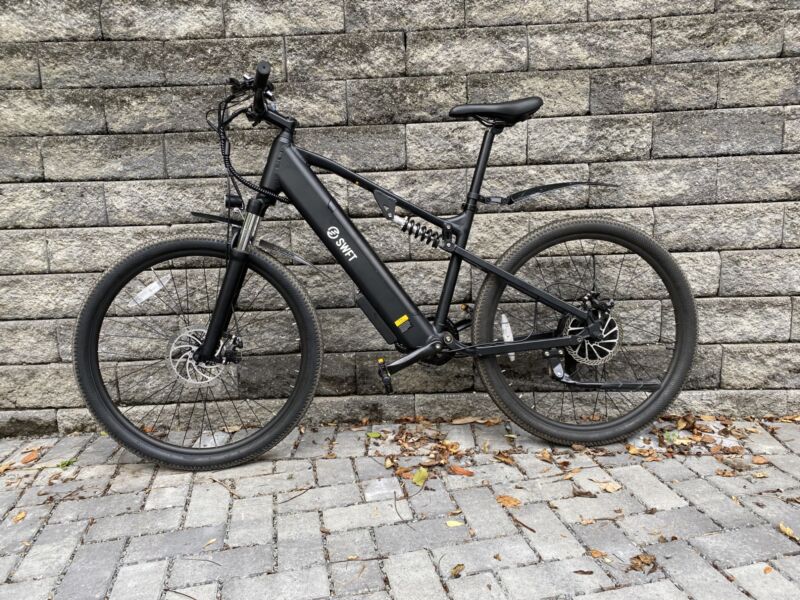
The subject of this review, SWFT's new Apex mountain bike, pulls together threads from two bikes we've looked at previously. One of those threads came courtesy of SWFT, which introduced itself to the world with the Volt, an exercise in trying to get e-bike prices down to the point where they weren't competing with a decent used car. While the Volt wasn't a great bike, it was perfectly functional and offered a decent ride at a sub-$1,000 price. Now, SWFT is trying to work that same magic with a mountain bike.
The second thread came courtesy of the Specialized e-mountain bike we looked at earlier this year. In that review, I suggested that if you wanted to drop less than three or four thousand dollars on even a non-electrified mountain bike, you would sacrifice quality and features.
The Apex raises the stakes of that sacrifice by keeping dual suspensions, throwing in an electric assist, and targeting the price below $2,200. The sacrifices involved are pretty noticeable and are made worse by a couple of questionable design decisions. While the bike can be fun to point at a trail, it doesn't work especially well as a mountain bike, though a lot of its issues would be easy to correct if SWFT decided to come out with a 2.0 version.
Points of distinction
To really understand the sorts of sacrifices that needed to be made in order to bring this bike in at $2,200, we can just start at the front wheel and work our way back. Most current bikes use what's called a through-axle, which screws directly into the fork. As long as the hub of the wheel isn't damaged, this guarantees that it will rotate evenly and the disk attached to the wheel will line up precisely in the middle of the brakes. While road bikes typically have a handle on one end of the axle to screw it in, mountain bikes skip the handle because it's just something else that can snag on the terrain (it's screwed in with an Allen wrench instead).
The Apex has a skewer here, which is used to clamp the axle in place. The skewer isn't as precise, so it's possible to fasten it in a way that leaves the wheel slightly out of alignment. And it also requires a handle, which can potentially get caught on stuff like foliage.
On the Apex, the fork it clamps into does have shocks. But most front shocks now come with a lever that lets you switch the firmness of the ride. On steady terrain, firming things up helps ensure that less of the energy that you put into pedaling gets stolen by the shocks; you can then just flip the lever to loosen things up when the terrain gets rugged. The front shocks on the Apex lack this system, so what you start the ride with is what you've got for its entirety.
Reader Comments (66)
View comments on forumLoading comments...